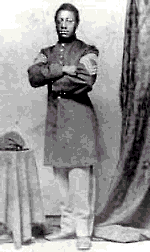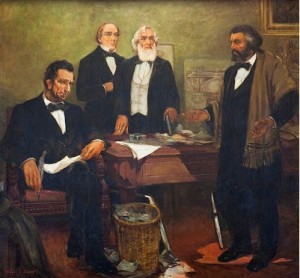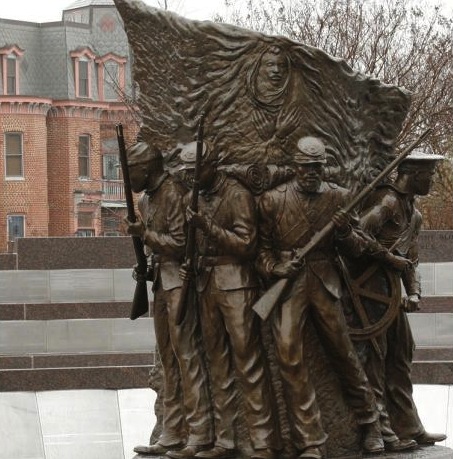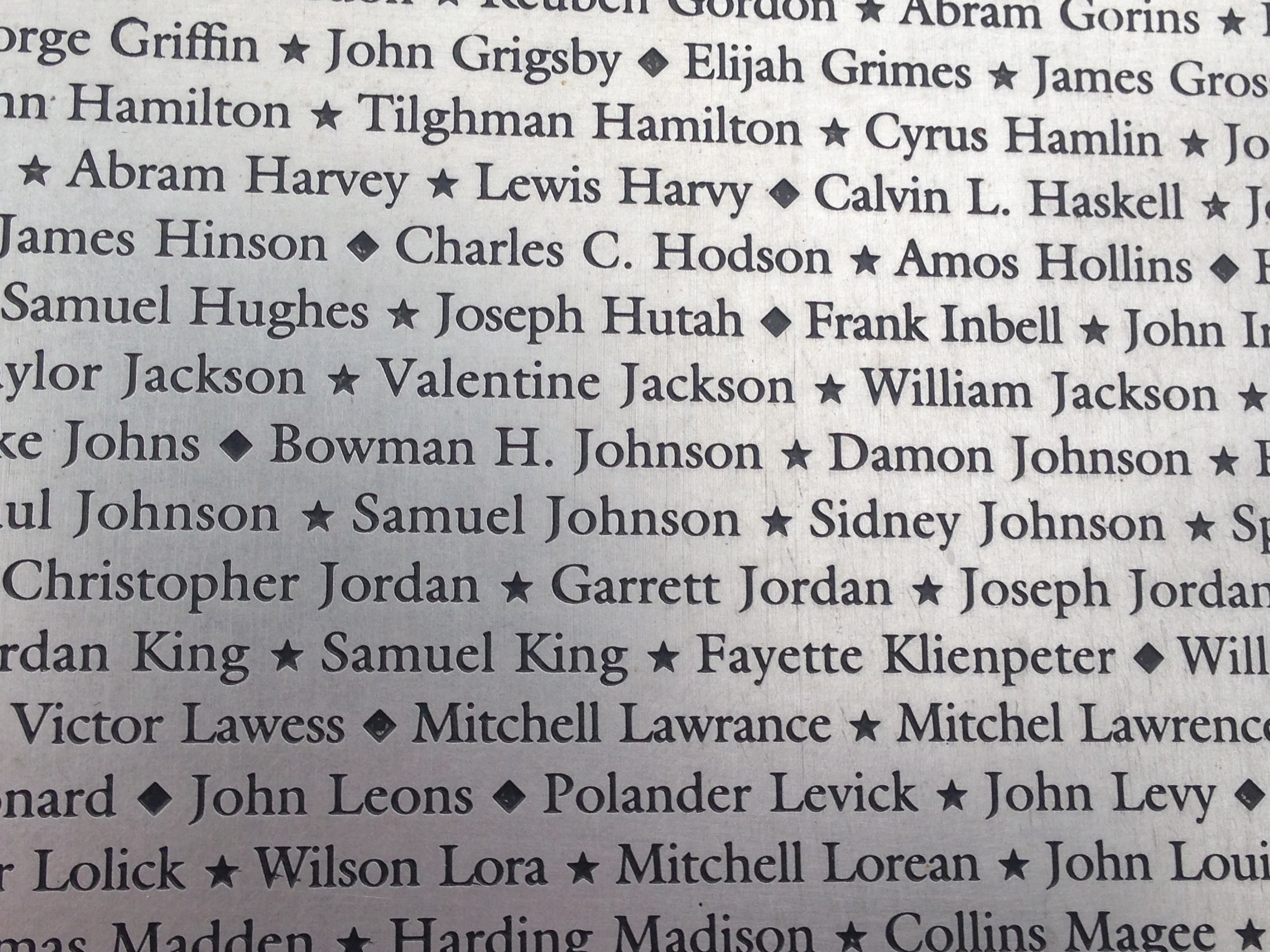Liberation Tour
 Time Travel Tour to the Civil War
Time Travel Tour to the Civil War We conclude our tour by returning to a monument which sums up the entire effort and
draws our eyes forward to the reconciliation effort at hand in America.
We began with self-liberators making their way to freedom and then visited with
two towering historic figures who came south again and again to advance the community and
ultimatley help liberate them all and then work for their advancement. We conclude the
tour by visiting with the 219,000 voices of liberation of the United States Colored Troops.
We will find the Unionville 18 here again, or the children of Frederick Douglass who helped
fight for liberty as well as the regiment in which Harriet Tubman served.
The mission of the African American Civil War Museum is to preserve and tell the stories of the
United States Colored Troops and African American involvement in the American Civil War.
he Spirit of Freedom: African American Civil War Memorial sculpture and its Wall of Honor,
was situated in the heart of the historic “U” Street district, and serves as a reminder of the
courageous story of the USCT.
The sculpture portrays uniformed soldiers and a sailor at a height of ten feet with a family
depicted on the back of the sculpture, and is situated in the center of a granite-paved plaza,
encircled on three sides by the Wall of Honor. The wall lists the names of 209,145 USCT drawn
from the official records of the Bureau of United States Colored Troops at the National Archives,
on 166 burnished stainless steel plaques arranged by regiment.
 Harriet Tubman the foremost Female Soldier in the War
Harriet Tubman the foremost Female Soldier in the War
On the 1st of June 1863, Harriet was the lead scout on the raid to destroy and liberate the Africans imprisoned in the largest concentration camps of South Carolina along the Combahee River. Carrying out the raid were 300 men of the 34th USCT regiment (referred to as 2nd South Carolina at the time) formed of the former prisoners who had escaped by the thousands from the camps as the Union lines drew close in November 1861. Their advance scouting of all the Confederate positions and all of the mines, permitted the gun boats of the Union army to accompany the army up the river and ultimately be used to transport over 800 to freedom on Beaufort South Carolina where many live to this day. The Coomonwealth newspaper reported of Harriet's participation in the raid: "Colonel Montgomery and his gallant bank of 300 black soldiers under the guidance of a black woman, dashed into the enemy's country, struck a bold and effective blow, destroying millions of dollars worth of commissary stores, cotton and lordly dwellings, and striking terror into the heart of rebeldom, brought off nearly 800 slaves and thousands of dollars worth of property, without losing a man or receiving a scratch. It was a glorious consummation.... The colonel was followed by a speech from the black woman who led the raid and under whose inspiration it was originated and conducted. For sound sense and real native eloquence her address would do honor to any man, and it created a great sensation."

 Frederick Douglas Sons Fought and Douglass Lobbied and Recruited
Frederick Douglas Sons Fought and Douglass Lobbied and Recruited
“A war undertaken and brazenly carried for the perpetual enslavement of the colored men,
calls logically and loudly for the colored men to help suppress it.”
When the Civil War began in 1861 Douglass began advocating for African Descent soldiers to be included in the
Union Army.
For two years Douglass wrote endlessly in
his publication, Douglass Monthly, in letters to influential friends and communicated his views in public
speaking gatherings, about the importance of enlisting African Descent American troops.
He was successful in 1863 when African Descent American men were allowed to enlist. As
soon as he got orders to start recruiting for the 54th Massachusetts Regiment his sons, Charles and Lewis,
were among the first ones to enroll. His oldest son, Frederick, worked recruiting soldiers.
Frederick Douglass traveled thousands of miles attending recruiting conferences and talking about
the responsibility of black freedmen in the American Civil War. His recruitment efforts were highly successful
as regiments quickly filled up. He established a new war objective - abolition.

Charles Remond Douglass enlisted in the 5th Massachusetts Cavalry, in which he rose to the rank of first sergeant.
 The African American Civil War Memorial
The African American Civil War Memorial
As a tribute to the sacrifices of Harriet Tubman, Frederick Douglass and all USCT veterans, the African American Civil War Memorial was dedicated in July of 1998 under the leadership of Dr. Frank Smith Jr., and Colin Powell. In honor of these American soldiers who fought for freedom during the American Civil War, the Spirit of Freedom: African American Civil War Memorial sculpture and its Wall of Honor serves as a reminder of the courageous story of the USCT. The sculpture portrays uniformed soldiers and a sailor at a height of ten feet with a liberated family depicted on the back of the sculpture, and is situated in the center of a granite-paved plaza, encircled on three sides by the Wall of Honor. The wall lists the names of 209,145 USCT drawn from the official records of the Bureau of United States Colored Troops at the National Archives, on 166 burnished stainless steel plaques arranged by regiment.
As you tour the monument locate the Unionville 18, the Eastern Shore Regiment, the sons of Frederick Douglass and the regiment which followed Harriet Tubman into battle.

Tour Services
Time Travel Reservations
The following departures are available for you and your friends or family:African American History Month Liberation Tour on February 18 2017 from 8am to 4pm EST in Washington DC
Contact Time Travel Tours



